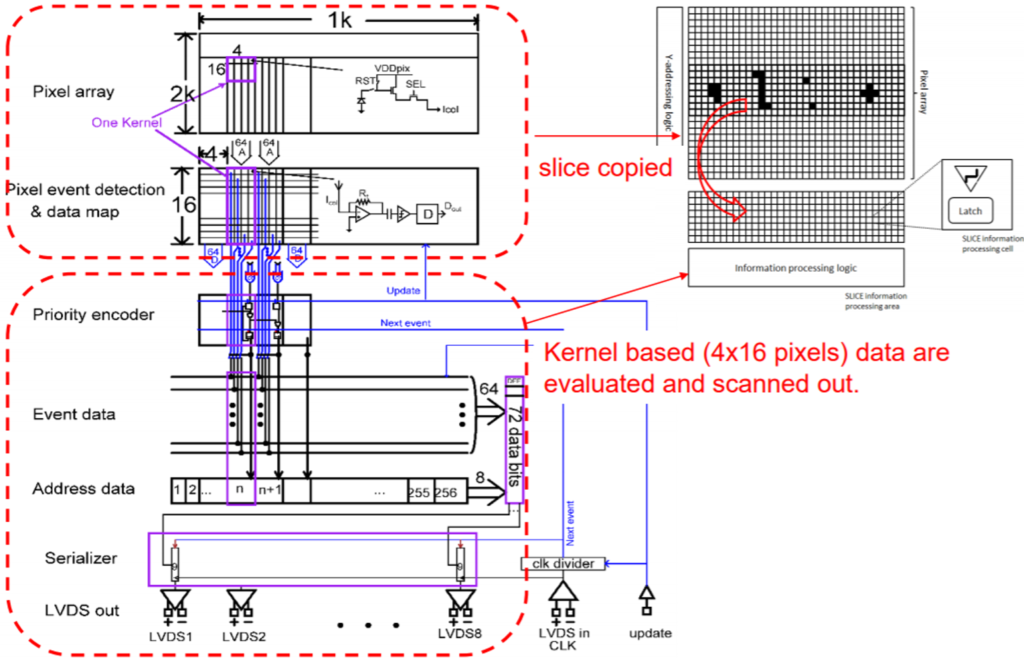US patent US10616521 was granted on April 7, 2020. It protects a system and a method to detect radiation in an array of pixels and reading out only the pixels or groups of pixels that contain information.
In many applications the “brute force” product Xpixels * Ypixels * frames_per_second is excessively high. Values beyond 10 Gpix/s have been reached, often at the cost of large parallelism and power, but not much more. If the image content is sparse, i.e. only a small percentage of pixels per frame contain information, as in:
- Particle detection (high energy physics)
- Electron microscopy
- X-ray imaging
- Lighting detection
- Laser or light spot tracking
- etc.
Forms of sparse imaging can be envisaged whereby the amount of data is reduced at the source, and the IO speed requirements of the IC to the outside world are greatly relaxed.
The actual patented method copies “slices of rows of pixels” simultaneously into an image processing area next to the pixel area. This processing area then executes a sparse readout of the information. In the actual embodiment only the X/Y positions of pixels are output over the LVDS output channels.

